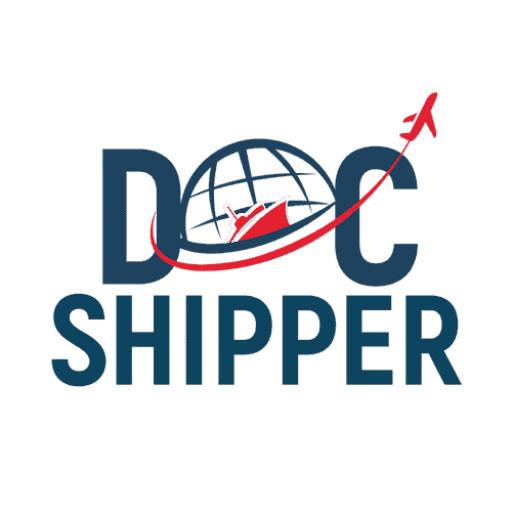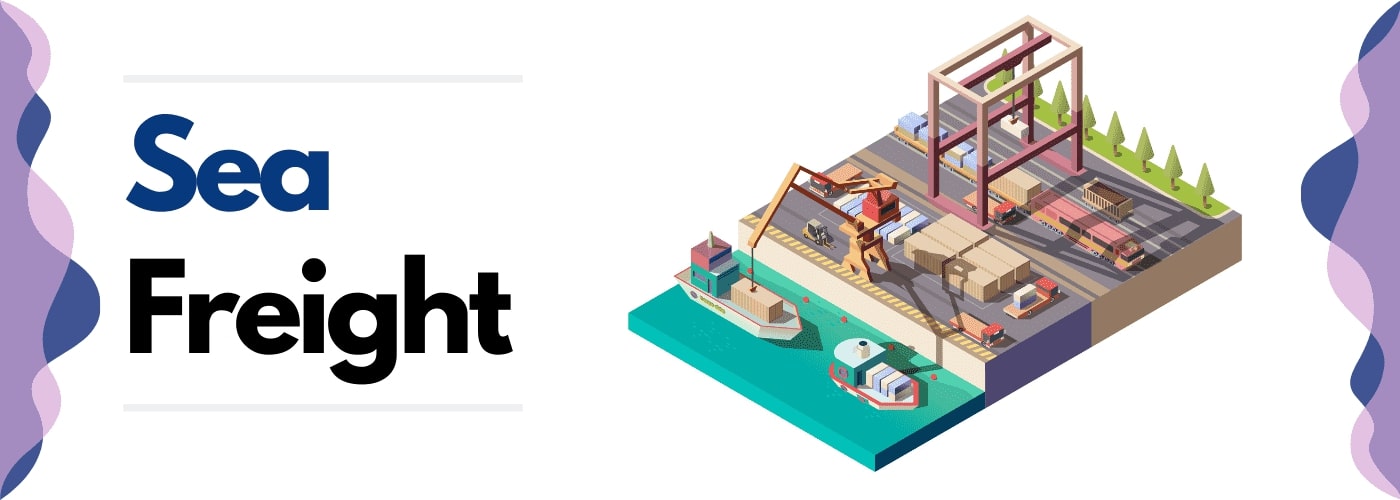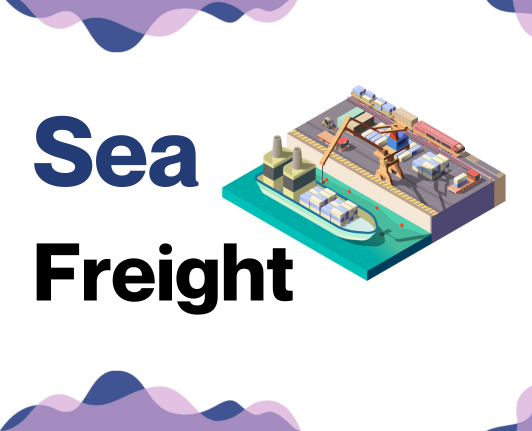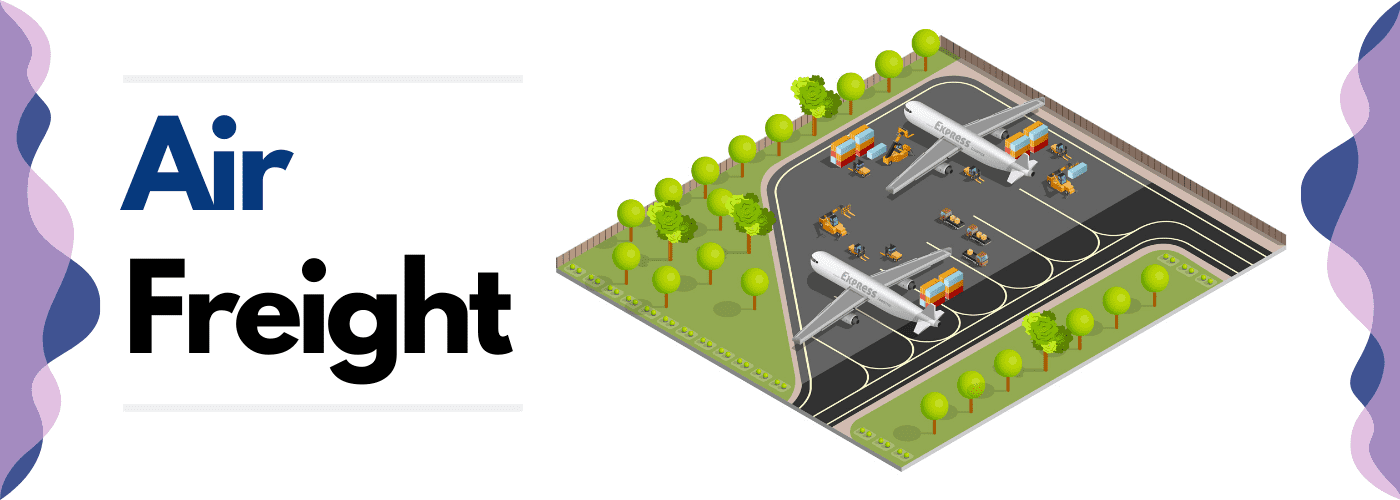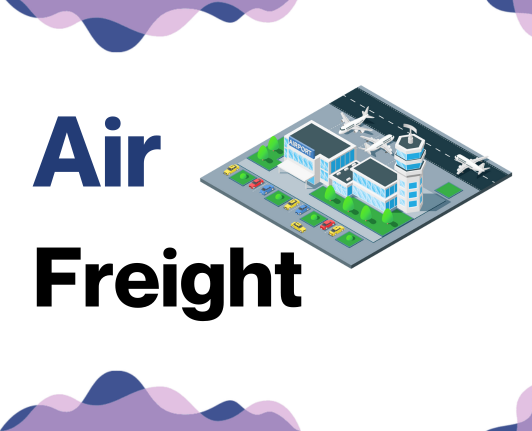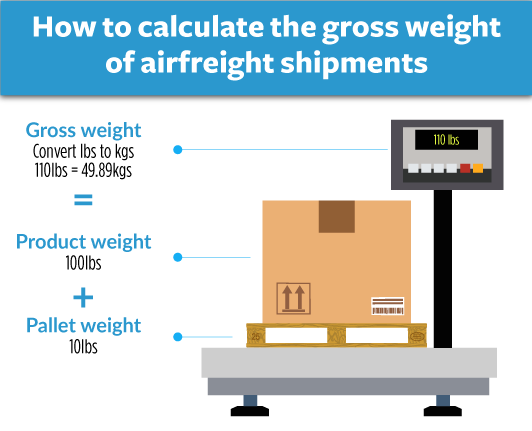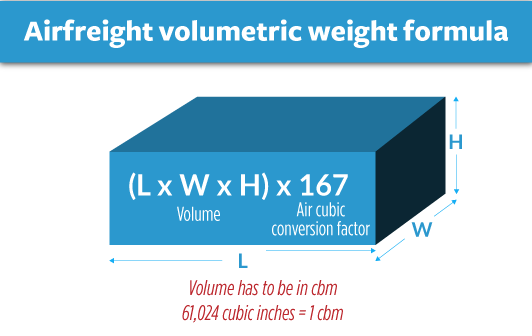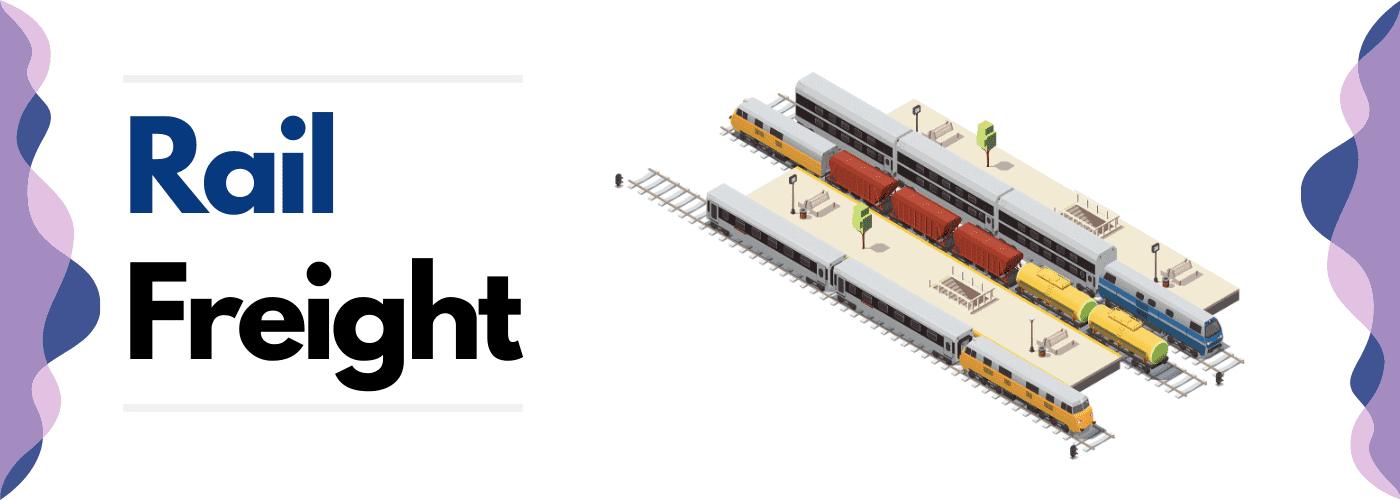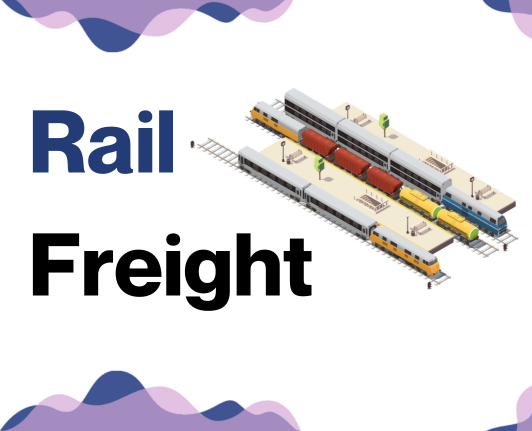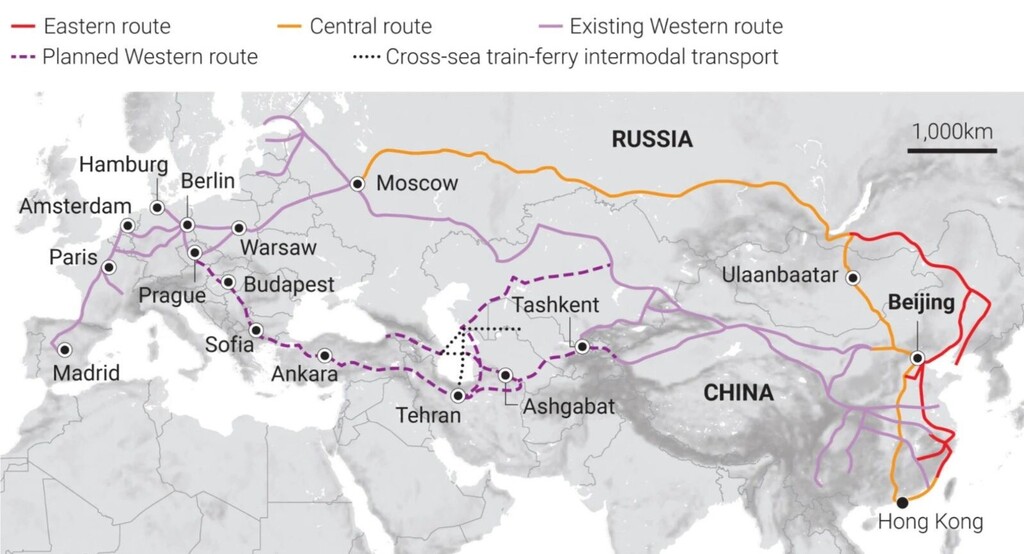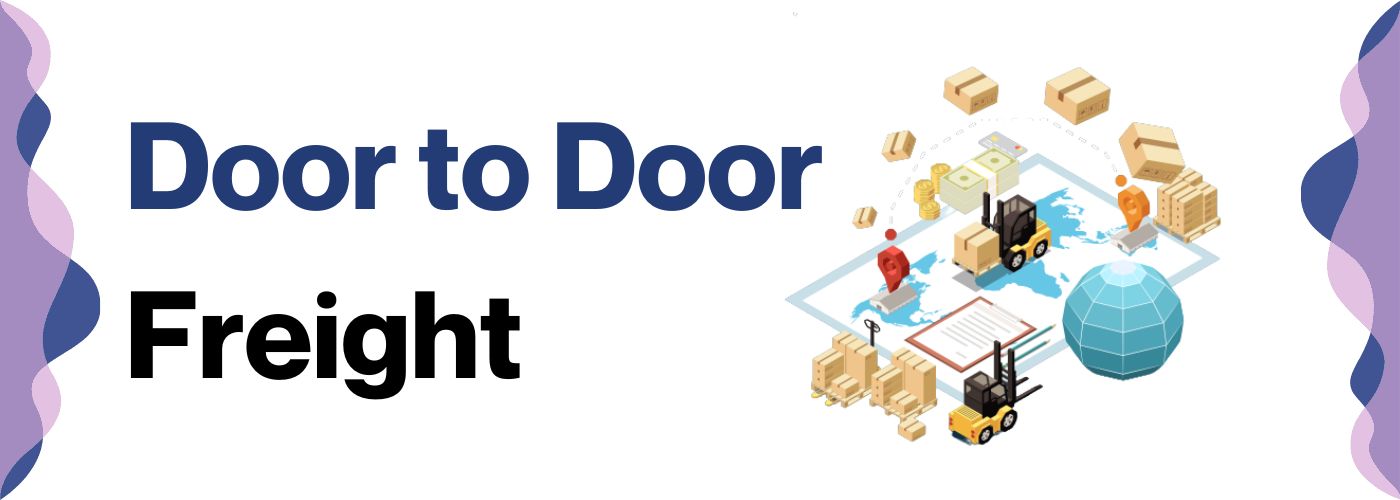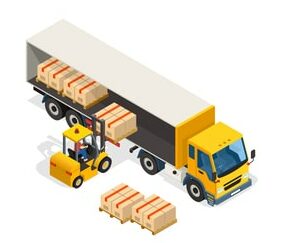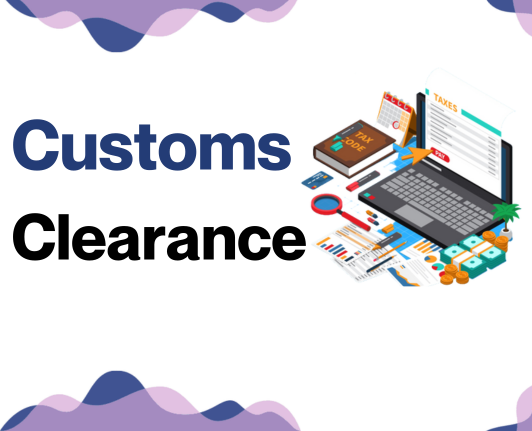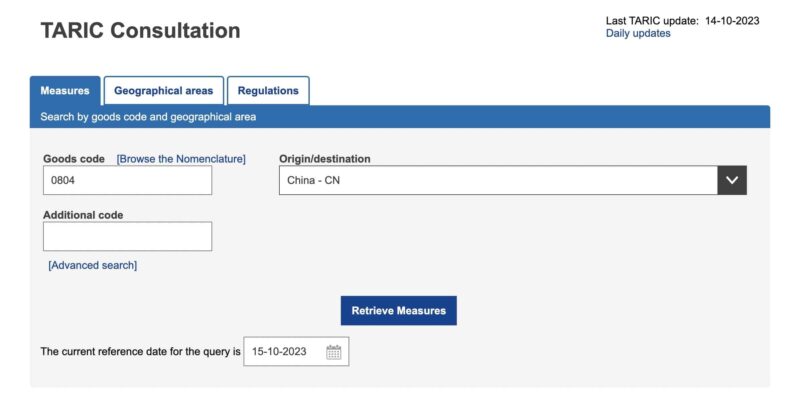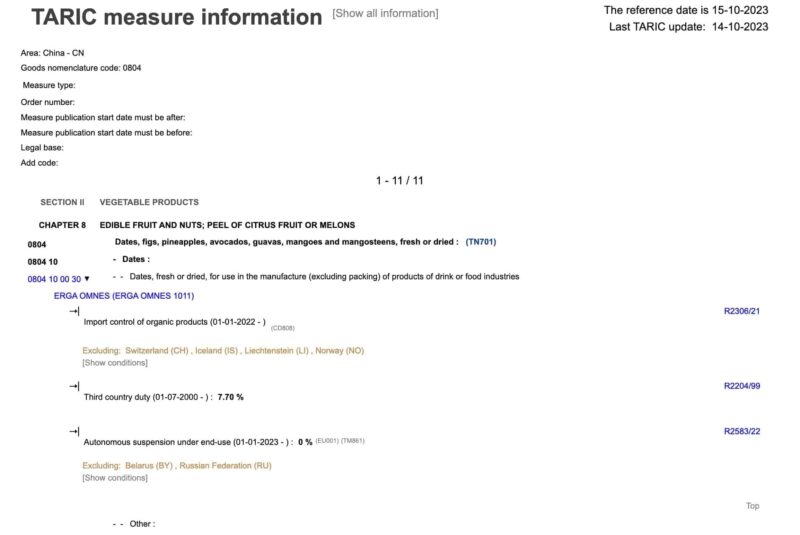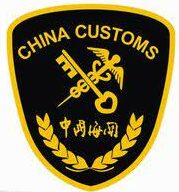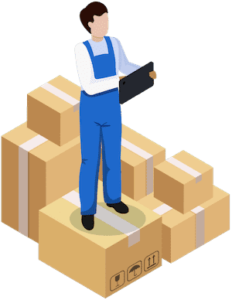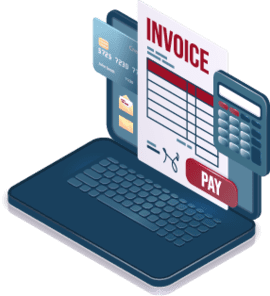Did you hear about the cargo ship that became a stand-up comedian? Its delivery was impeccable! And impeccable delivery is exactly what businesses need when exporting from China to Austria. Between decoding complex rate structures to predicting transit times and traversing stringent customs regulations, it's an intricate puzzle.
Our comprehensive guide might be just the solution, meticulously dedicated to not only explaining the basics, but also delving deep into practical advice tailored specifically for your enterprise. From choosing the ideal freight option, understanding customs clearance, decoding duties and taxes, we’ve got you covered. If the process still feels overwhelming, let DocShipper handle it for you! As an international freight forwarder, we simplify every step of your shipping endeavor, turning challenges into success. This guide is your unraveling kit to a seamless freight transportation experience!
Which are the different modes of transportation between China and Austria?
Choosing the ideal method to transport goods between China and Austria can feel like picking the right tool from a packed toolbox. Let's decode this. With their far-off places on the map, it's like throwing a paper airplane across a football field - road or rail won't do the trick.
That leaves air and sea freight. Like choosing between a jet and a ship, each has its merits. Get ready to dive deep into these transport methods, their pros and cons, and how they can make your shipping experience smooth sailing. Remember, it isn't one size fits all!
How can DocShipper help?
Confused about shipping goods from China to Austria? DocShipper is here to dispel the haze of international logistics! We handle everything from freight organization to customs clearance, ensuring your shipment sails smoothly. Chat with our expert consultants at no cost, or contact us for a free freight quote within 24 hours. Let's simplify your shipping!
DocShipper Tip: Sea freight might be the best solution for you if:
- You are shipping large volumes or bulky items, as sea freight offers the most space at a cost-effective rate.
- Your cargo doesn't have an urgent deadline, as sea freight typically has longer transit times compared to air or rail.
- Your shipping routes are between major ports, allowing you to leverage the extensive global network of sea shipping lanes.
Sea freight between China and Austria
China and Austria, both economic powerhouses in Asia and Europe respectively, rely strongly on each other for trading vast amounts of consumer goods, electronics, and manufacturing materials. The vast Pacific Ocean, once a barrier, has now turned into a bustling highway, with cargo ships plying between China's Shenzhen and Shanghai and Austria's Vienna and Linz. Indeed, sea freight shipping is the tortoise in this global trade race, offering a slower pace than its hare-like counterparts - air, road, and rail.
But for high-volume goods such as Austrian machinery parts or Chinese electronics, the tortoise is a cost-effective champion.
Yet, the tortoise’s path isn’t always smooth. Shippers often stumble on customs clearance knots, baffling tariffs, and diverse regulations. Like cracking a complex puzzle, decoding shipping between China and Austria gives businesses sleepless nights.
Not to worry, this section shines a flashlight on those cloudy zones, unraveling misunderstood practices and providing a loyal compass to navigate successfully through the stormy shipping seas. Happy sailing!
Main shipping ports in China
Port of Shanghai
Location and Volume: Nestled at the heart of the Yangtze River Delta. It leads global trade with a shipping volume of nearly 43.3 million TEU in 2021, making it the busiest port in the world.
Key Trading Partners and Strategic Importance: Its proximity to China's economic hub gives it significant ties with partners such as South Korea, Japan, and the United States. The port is a strategic pivot point for the Belt and Road Initiative, facilitating trade on a massive scale.
Context for Businesses: If you're pursuing business expansion in East Asia, Port of Shanghai should be a critical part of your shipping strategy given its staggering volume and regional connectivity.
Port of Shenzhen
Location and Volume: Positioned in Guangdong province, the Port of Shenzhen boasts a shipping volume of 27.7 million TEUs in 2021.
Key Trading Partners and Strategic Importance: Being next door to Hong Kong, it maintains strong trade relations with Taiwan, Vietnam, Singapore, and Malaysia. The port is integral to the Guangdong-Hong Kong-Macau Greater Bay Area plan, serving as a gateway to Southern China and Southeast Asia.
Context for Businesses: If your business operations necessitate strong connectivity with Southeast Asia, the Port of Shenzhen offers unrivalled access and comprehensive marine services.
Port of Ningbo-Zhoushan
Location and Volume: Situated in Zhejiang province, the Port of Ningbo-Zhoushanhandled a remarkable volume of 28.7 million TEU in 2021.
Key Trading Partners and Strategic Importance: It is crucial for trade with South Korea, Japan, and Indonesia, and it is particularly important for mineral and ore imports.
Context for Businesses: The Port of Ningbo-Zhoushan is perfect for businesses importing large quantities of raw materials given its capacity for bulk and heavy goods.
Port of Hong Kong
Location and Volume: The iconic Port of Hong Kong(https://www.mardep.gov.hk/en/home.) is in the South China Sea and had shipping volume of about 19.6 million TEUs in 2019.
Key Trading Partners and Strategic Importance: The port has significant trade engagements with Singapore, Taiwan, and the USA. It is also China's main gateway to international markets.
Context for Businesses: If you're progressing towards global expansion, the strategic location and strong international networks of the Port of Hong Kong could be highly beneficial.
Port of Guangzhou
Location and Volume: Nestled on the Pearl River, the Port of Guangzhou had a shipping volume of 24 million TEUs in 2021.
Key Trading Partners and Strategic Importance: It shares robust trade connection with Australia, Europe, and America, and forms a critical part of the Maritime Silk Road project.
Context for Businesses: If you're seeking to diversify your logistics chain towards Europe and America, incorporating the Port of Guangzhou could be a strategic move.
Port of Qingdao
Location and Volume: Located in Shandong province, the Port of Qingdao saw a volume of 21 million TEUs in 2020.
Key Trading Partners and Strategic Importance: It maintains alliances with countries around the Pacific Rim. The port is also a central nexus for China's oil imports.
Context for Businesses: For businesses dealing in energy resources, the Port of Qingdao offers robust infrastructural support and streamlined customs procedures for oil and gas imports.
Main shipping ports in Austria
Port of Vienna
Location and Volume: Located in Vienna, Austria's capital, this port is fundamental for Central European trade, accommodating an estimated two million tons of cargo each year.
Key Trading Partners and Strategic Importance: Key trading partners include Germany, Italy, USA, and China. It holds significant strategic importance as it is a hub for Europe's intermodal transportation, linking the Northwestern seaports of Europe through Danube's waterway.
Context for Businesses: If you're planning to capitalize on European markets and beyond, Port of Vienna might become a crucial part of your shipping strategy given its advanced facilities and its central location that provides access to significant trade routes across Europe.
Port of Krems
Location and Volume: Situated in Lower Austria, this inland port specializes in bulk and heavy-lift cargo, with an annual shipping volume of about 1.3 million tons.
Key Trading Partners and Strategic Importance: This port mainly trades with countries located along the Danube, such as Germany and Hungary. It's strategically significant due to its infrastructure that enables it to handle specific kinds of shipments efficiently with emphasis on environmentally friendly logistics.
Context for Businesses: If you're considering the handling of heavy-lift cargo or aiming to reduce the environmental impact of your supply chain, the Port of Krems might be an excellent choice, thanks to its specialized handling methods and environmentally conscious operations.
Port of Linz
Location and Volume: Located in Upper Austria, this port supports over 4.6 million tons of cargo movement yearly, making it one of Austria's busiest ports.
Key Trading Partners and Strategic Importance: The port has strong trade connections with countries across Europe and is renowned as a hub for the oil and steel industries due to its proximity to Voestalpine AG, one of the largest steel-producing companies in the world.
Context for Businesses: If you're involved in the trade of commodities such as oil and steel, Port of Linz may play a significant role in your supply chain strategy, as it provides robust facilities and convenient connections to major steel and oil companies.
Please note that the hyperlinks provided direct you to the official websites for more detailed information on facilities, services, and processes for these ports.
Should I choose FCL or LCL when shipping between China and Austria?
Choosing between Consolidation, also known as (Less than Container Load, LCL) or Full Container Load (FCL), is a key decision you'll face when shipping goods from China to Austria. This choice will impact not only your costs, but also delivery times, and the overall success of your shipping operation.
Using approachable and engaging language, we're going to demystify these options, highlight their unique differences, and aid you in making an informed decision that'll best serve your specific shipping needs. Get ready to deepen your understanding of shipping methods to ensure your cargo reaches its destination efficiently and cost-effectively.
LCL: Less than Container Load
Definition: LCL, or Less than Container Load, refers to the shipping method where your cargo shares a container with others' goods. It is ideal for lower volume shipments and is priced based on the volume (CBM) or weight of the goods.
When to Use: This method is your best bet when your cargo volume is less than 13 to 15 CBM. It provides better flexibility as you don't have to wait to fill an entire container.
Example: Imagine you're an electronics supplier exporting 10 CBM of electronics parts from China to Austria. Instead of renting a full container, you opt for an LCL shipment. You only pay for the 10 CBM space your goods occupy, while other shippers pay for the remaining space in the container.
Cost Implications: While LCL freight can be cost-saving for smaller loads, it may be more expensive per CBM compared to a Full Container Load (FCL). There can be additional charges as well, due to handling and managing multiple shippers' goods inside the same container. However, these costs can be outweighed by the advantages of not having to wait for enough goods to fill a full container.
FCL: Full Container Load
Definition: FCL, or Full Container Load, refers to a shipment method where the entire container is exclusively taken up by your cargo. It's an ideal choice when opting for fcl shipping between China and Austria.
When to Use: If your cargo volume is more than 13/14/15 CBM, FCL should be your go-to. It's economical for high-volume shipments and offers better security, as the container remains sealed from origin to destination.
Example: Imagine you're a European sports equipment retailer who sources heavy-duty treadmills from China. The cargo quantity fills up more than half of a 20'ft container or a quarter of a 40'ft container. Choosing FCL makes sense here, as it's cheaper, and the sealed container ensures treadmills won't be damaged during transit.
Cost Implications: While the fcl shipping quote might seem high at first glance, it's a cost-effective solution when dividing the total cost by the volume of your shipment. For large volumes, FCL proves less expensive than sharing the container (LCL), primarily as you're not paying for the additional handling involved in LCL shipments. The choice between a 20'ft or 40'ft fcl container depends on the cargo size and your overall shipping budget.
Unlock hassle-free shipping
Experience hassle-free cargo shipping with DocShipper, your trusted freight forwarder. Debating between consolidation or a full container for your China-Austria shipment? Our ocean freight experts will guide you, considering factors like cargo volume, urgency, and budget. Trust us to streamline your international trade journey. Ready to explore the best shipping options for your business? Contact us today for a free estimation. Take the first step towards a smoother freight experience.
How long does sea freight take between China and Austria?
Sea freight between China and Austria typically requires a sizable investment of time. This duration depends on various factors, including the specific ports involved, the weight of the consignment, and the nature of the goods being transported. To get a tailored quote to meet your unique business needs, it's recommended to reach out to a proficient international freight forwarder like DocShipper.
Below is an illustrative table displaying average transit times, in days, between the major ports of China and Austria:
| China (Port) | Austria (Port) | Average Transit Time (days) |
| Shanghai | Vienna | 39 |
| Shenzhen | Vienna | 32 |
| Guangzhou | Vienna | 37 |
| Qingdao | Vienna | 41 |
*It's worth noting that Austria, being a landlocked country, does not have its ports. Hence, 'Vienna' denotes the goods' final destination in Austria after they have been transported by other means from port cities.
How much does it cost to ship a container between China and Austria?
The cost of shipping a container from China to Austria varies widely, reflecting ocean freight rates and numerous other factors. These include the Points of Loading and Destination, the shipping carrier, and the nature of the goods you're sending. Moreover, monthly market fluctuations can swing shipping costs. Therefore, pinpointing an exact shipping cost is elusive, as it shifts based on these variables.
Nonetheless, we assure you that our shipping specialists will diligently work on your behalf to achieve the best possible rates. Our team quotes on a case-by-case basis, ensuring a tailored, cost-effective solution for your shipping needs.
Special transportation services
Out of Gauge (OOG) Container
Definition: An OOG container, or Out of Gauge container, is a specialized shipping container used for cargo that exceeds the standard dimension (length, width, or height).
Suitable for: Materials that are large or have unusual shapes, such as heavy machinery, construction equipment, and parts of wind turbines.
Examples: A construction company might use an OOG container to ship a crane from China to Austria.
Why it might be the best choice for you: If your business deals with oversized items that cannot fit into standard shipping containers, an OOG container could be the ideal choice to ensure safe transport.
Break Bulk
Definition: Break bulk is a shipping method where goods are loaded individually rather than in containers or packaging.
Suitable for: Large items that are not suitable for container shipping due to their size, weight, or shape.
Examples: Large pipes or steel beams would ideally be shipped using a break bulk method.
Why it might be the best choice for you: This method helps ship large items, ensuring safe and efficient transport by placing loose cargo load directly on the vessel.
Dry Bulk
Definition: This method involves the shipment of unpackaged goods in large quantities, typically dumped or poured as a liquid or solid into a merchant vessel.
Suitable for: Materials such as grains, coal, and minerals.
Examples: A coal mining company may ship large quantities of coal from China to Austria using dry bulk shipping.
Why it might be the best choice for you: If your business involves shipping large quantities of unpackaged goods, then dry bulk shipping might be the most cost-effective and efficient method.
Roll-on/Roll-off (Ro-Ro)
Definition: Roll-on/Roll-off, or Ro-Ro, is a shipping method where vehicles or machinery are driven directly onto the ro-ro vessel, transported and then driven off at the destination port.
Suitable for: Wheeled cargo such as cars, trucks, trailers, tractors, or any heavy machinery equipped with wheels.
Examples: An automobile company may utilize Ro-Ro to ship cars from China to Austria.
Why it might be the best choice for you: If your product is self-propelled or can be driven onto the ship and off again, Ro-Ro could be a cost-efficient and convenient solution.
Reefer Containers
Definition: Reefer containers are refrigerated shipping containers used to transport temperature-sensitive goods.
Suitable for: Perishable foods, pharmaceuticals, and other goods that need to be kept chilled or frozen during transport.
Examples: A seafood exporter might use a reefer container to maintain the freshness of their products during shipment from China to Austria.
Why it might be the best choice for you: If your goods are temperature-dependent, opting for a reefer container can ensure your products maintain their quality during transit, preventing spoilage and loss.
Now that you are familiar with these options and have a better understanding of which might be best suited to your particular needs, we invite you to reach out to us at DocShipper. We offer the expertise you need to navigate the shipping process successfully and offer a free shipping quote in less than 24 hours.
DocShipper Tip: Air freight might be the best solution for you if:
- You are in a hurry or have a strict deadline requirement, as air freight offers the fastest transit times.
- Your cargo is less than 2 CBM (Cubic Meter), making it more suitable for smaller shipments.
- Your shipment needs to reach a destination that is not easily accessible by sea or rail, allowing you to tap into the extensive network of global airports.
Air freight between China and Austria
When thinking fast and reliable, air freight is your ticket. Picture this: You're moving high-value electronics from Beijing to Vienna. Time is crucial and every second counts. Air freight is perfect for these pint-sized yet pricey packages, rocketing your goods across continents at the pace of a plane.
Hitting a snag can be pricey, though. Missteps, like inaccurate weight estimation of your goods, can cause spending to soar like a jet, leaving your wallet emptier than a holiday airport. Our guide covers these pitfalls and gives insight to streamline your shipment, ensuring cost-effective, speedy, and reliable deliveries from China to Austria.
Air Cargo vs Express Air Freight: How should I ship?
When sky-high deliveries from China to Austria are on your agenda, it's time to choose your airborne ally: air cargo or express air freight. Think of air cargo as flying economy – it's part of a commercial airline's belly, sharing space with passenger luggage.
On the other hand, express air freight is like owning a private jet; it's a dedicated plane that races against time delivering only your shipments. Let's explore these two options and decide which suits your business best.
Should I choose Air Cargo between China and Austria?
Air cargo could be the go-to solution for your shipping needs between China and Austria. The major players in this segment are China Southern Airlines and Austrian Airlines, known for reliability and cost-effectiveness.
Be aware that longer transit times can occur due to strict flight schedules. This method becomes particularly attractive for weights of 100/150 kg (220/330 lbs) and over. By judging your needs and budget, you can make an astute choice.
Should I choose Express Air Freight between China and Austria?
If you are aiming to ship packages from China to Austria that are under 1 CBM or roughly 100/150kg (220/330 lbs), opting for Express Air Freight is a smart move. This specialized service, offered by world-class couriers like FedEx, UPS, and DHL, ensures your goods board cargo-only flights, omitting passenger restrictions.
Speed and efficiency are remarkable advantages - expect your shipment to arrive within 3-5 business days. Choosing express air freight keeps your goods on the go, favoring your timetable and bolstering your supply chain's agility.
Main international airports in China
Beijing Capital International Airport
Cargo Volume: Roughly 2.3 million metric tonnes in 2019.
Key Trading Partners: United States, Japan, South Korea.
Strategic Importance: As one of the busiest airports in the world, it provides direct air links to more than 120 international destinations.
Notable Features: It boasts state-of-the-art cargo handling facilities, offering high standards of security and efficient customs clearance procedures.
For Your Business: If based in the northern region of China or shipping large volume goods, the Beijing Capital International Airport might serve as an ideal hub due to its immense handling capacity and global reach.
Shanghai Pudong International Airport
Cargo Volume: Six million tonnes in 2020.
Key Trading Partners: United States, Germany, Japan.
Strategic Importance: It houses one of the most extensive cargo areas in China, making it a crucial gateway for trade between Asia and Europe.
Notable Features: It features advanced processing facilities for perishable and pharmaceutical cargo.
For Your Business: If time-sensitive or specialty goods like food and medical supplies are your focus, consider using the Shanghai Pudong International Airport for their specialist handling services.
Guangzhou Baiyun International Airport
Cargo Volume: Approximately 1.78 million tonnes in 2019.
Key Trading Partners: Southeast Asia, Australia, Europe.
Strategic Importance: Located in the heart of the Pearl River Delta, it's an imperative hub for South China’s manufacturing and distribution industries.
Notable Features: It's known for effective and fast customs clearance, boasting e-customs facilities to speed up the process.
For Your Business: If you're located in South China or trading regularly with Southeast Asia and Australia, Guangzhou Baiyun may suit your business due to its strategic location and efficient procedures.
Chengdu Shuangliu International Airport
Cargo Volume: Just over 500,000 tonnes in 2019.
Key Trading Partners: United States, Netherlands, Japan.
Strategic Importance: It's the largest aviation hub in central and western China, acting as the main gateway to the economically booming area.
Notable Features: It's the only airport in the region equipped to handle the Airbus A380, allowing for larger freight capacities.
For Your Business: If you're trading with growing economies of western China, consider using Chengdu Shuangliu for its unique capability to handle larger volumes of goods.
Hong Kong International Airport
Cargo Volume: About 4.8 million tonnes in 2020.
Key Trading Partners: United States, Mainland China, Taiwan.
Strategic Importance: It's not only a major hub for flight connections, but it also boasts the world's largest air cargo center, thus acting as a hub for global trading activities.
Notable Features: Specializes in transshipment services, with modern freight facilities and a highly efficient road feeder service for speedy transfers.
For Your Business: If your operation involves complex logistics and transshipping, consider Hong Kong International Airport for its global connections, transshipping facilities, and proximity to manufacturing areas in the Pearl River Delta.
Main international airports in Austria
Vienna International Airport
Cargo Volume: Annually, about 295,000 tons of cargo pass through Vienna International.
Key Trading Partners: Key partners include regions in Europe, the Middle East, and East Asia, including China, Germany, and the United Arab Emirates.
Strategic Importance: As Austria's largest international airport, it's ideally located for connecting flights across Europe. It's one of the central hubs for Eastern Europe and the Middle East.
Notable Features: The airport has a state-of-the-art logistics center called the Vienna Pharma Handling Center, specializing in the transport of temperature-sensitive pharmaceutical products.
For Your Business: If your business involves shipping specialized or temperature-sensitive goods, Vienna International could be an ideal option for you. Its central European location also makes it a strategic choice for shipments to or from Eastern Europe and the Middle East.
Innsbruck Airport
Cargo Volume: There are limited freight volumes due to the size and focus of the airport, it primarily serves passenger traffic.
Key Trading Partners: Mainly handles cargo within Europe, specifically destinations like Germany, the UK, and the Netherlands.
Strategic Importance: The airport plays a significant role in supplying Alpine regions often difficult to reach by road, particularly during winter.
Notable Features: Its position in the Alps offers a unique advantage for shipping goods to hard-to-reach destinations, and it can handle both small and larger cargo planes despite its size.
For Your Business: If your business needs to deliver goods to difficult-to-reach Alpine regions quickly and efficiently, Innsbruck Airport might be a valuable addition to your shipping strategy.
Linz Airport
Cargo Volume: Annually handles approximately 50,000 tons of cargo.
Key Trading Partners: Handles cargo connections mainly within Europe, including Germany, Italy, and France.
Strategic Importance: It's strategically positioned in central Austria, making it a financially and logistically viable choice for businesses in or around the region.
Notable Features: Linz airport has a direct connection to the highway network, enabling effective road transport for goods shipped by air.
For Your Business: If your company is located in central Austria or nearby regions, and needs efficient road transport options after air freight, Linz Airport could be an ideal choice.
Salzburg Airport
Cargo Volume: Approximately 8,000 tons of air cargo are handled at Salzburg Airport each year.
Key Trading Partners: Predominantly serves freight transport with European countries such as Germany, Belgium, and the UK.
Strategic Importance: Located near the German border, it can effectively serve businesses in both Austria and southern Germany.
Notable Features: Despite primarily focusing on passenger traffic, it can handle wide-body aircrafts for larger cargo movements.
For Your Business: If your business requires shipping goods between Austria and Germany, or large cargo movements within Europe, Salzburg Airport could be an effective part of your shipping strategy.
Graz Airport
Cargo Volume: The cargo volume is quite limited as the focus is on passenger traffic.
Key Trading Partners: The airport primarily caters to European destinations, including Italy, Germany, and Greece.
Strategic Importance: Situated in southern Austria, it is important for the shipment of goods to/from the Balkan region.
Notable Features: It is home to the Styrian Aerospace Cluster, so businesses involved in the aerospace industry often use Graz Airport for shipping goods.
For Your Business: Being near the Balkan region, if you frequently ship goods to/from these countries, Graz Airport could play a key role in your strategy. Additionally, businesses in the aerospace industry can benefit from the advanced facilities and network of the Styrian Aerospace Cluster.
How long does air freight take between China and Austria?
Shipping goods from China to Austria via air freight typically takes between 3-5 days. However, keep in mind that this is an average estimate and the actual transit time may vary. It can be influenced by several factors including the specific airports involved, the weight of the cargo, and the nature of your goods.
For precise shipping times suited to your unique needs, it would be beneficial to consult a trusted freight forwarder, such as DocShipper.
How much does it cost to ship a parcel between China and Austria with air freight?
Air freight costs between China and Austria average $4-$8 per kg, a broad estimate reflecting the high variability in shipping costs.
These rates aren't set in stone - factors such as distance between airports, package dimensions, weight, and the nature of goods significantly influence the price. We understand that these details make a big difference, so we provide quotations tailored to your specific circumstances.
Our team is here to walk you through every step and optimize your costs. Don't hesitate to reach out. Contact us and receive a free quote in less than 24 hours.
What is the difference between volumetric and gross weight?
Certainly, when dealing with cargo shipping, it's crucial to understand the differences between gross weight and volumetric weight. Gross weight is simply the actual weight of your shipment, typically measured in kilograms (kg). Volumetric weight, on the other hand, is a calculation that considers the space your shipment occupies based on its dimensions.
In air cargo services, volumetric weight is calculated using the formula: length(cm) x width(cm) x height(cm) / 6000. For Express Air Freight, this changes slightly to length(cm) x width(cm) x height(cm) / 5000.
For example, imagine a 15kg shipment with dimensions 40cm x 50cm x 60cm. If standard air cargo, your volumetric weight would be 40 x 50 x 60 / 6000 = 20kg (44lbs). For Express, it would be 40 x 50 x 60 / 5000 = 24kg (53lbs).
The significance of these calculations lies in cost- the freight charges are determined based on whichever is higher: the gross or volumetric weight. This ensures the most effective utilization of cargo space.
DocShipper tip: Rail freight might be the best solution for you if:
- You are looking for a cost-effective transportation method for large volumes.
- Your shipping route is well-connected by rail, providing a reliable and environmentally friendly option.
- Your cargo's destination and origin are near rail terminals, minimizing the need for additional road transportation.
Rail freight between China and Austria
Brace yourself for a journey on the Silk Road Express! Well, that's the nickname for the pioneering China-Austria railway connection, otherwise known as the coziest trade highway ever put to rails. Established in 2011, this steel route has been a catalyst for improved economic cooperation between these nations, binding them tighter in a lucrative partnership.
Meandering across Belarus, Poland, Germany, and Kazhakstan, this rail freight route is a remarkable lifeline for transporting goods, especially mechanical parts, textiles, and electronics. While it's slower than air freight, its cost efficiency makes it a compelling choice for businesses dealing in larger, heavier goods.
However, biting the railway biscuit isn't without challenges! Navigating customs procedures can be like playing Pac-Man – dodgy moves might cost you plenty. Plus, unexpected delays can threaten your schedule. Still, with due diligence, this transport method can put your business on the right track.
So, why not investigate if rail freight is the right route for your shipping needs? It might be your ticket to trade success!
What are the main train stations between China and Austria?
1. Zhengzhou International Land Port, China: This inland port is one of the most active in China and a key gateway for rail freight between East and West. Accounting for a considerable portion of China's international rail freight volume, it serves as a major hub for goods destined for Europe and Asia. For your business, it can be a potential consolidation point, given its strategic location and high-frequency services.
2. Xi'an International Trade & Logistics Park, China: Located in the capital of Shaanxi province, this port is a modern international trade and logistics park. It plays an integral role in the Belt and Road Initiative, with rail services reaching Central Asia, Europe, and the Middle East. For your business, the large warehouse capacity and comprehensive customs facilities make it convenient for handling a wide range of goods.
3. Chongqing-Xinjiang-Europe Railway (YuXinOu Railway), China: Chongqing is a crucial base for goods bound for Europe. It is known for its impressive handling times and is a major port for electronic and automotive parts. The quick turnover could be advantageous for your business if managing time-sensitive cargo.
4. Suzhou Industrial Park Railway Port, China: Located in the Yangtze River Delta, it is a core logistics hub that connects China with Central Asia and Europe. Specializing in electronic products and creating the optimal environment for e-commerce businesses, your business could benefit from its strategic location and specialized facilities.
5. Vienna South Freight Center, Austria: As Austria's largest terminal for combined transport, this station is crucial for goods being shipped to Eastern Europe and Asia. Noted for its excellent intermodal services, it can accommodate a wide variety of cargo. This makes it a versatile choice for your business, irrespective of the nature of your goods.
6. Wolfurt Railway Station, Austria: Placed near the Swiss and German borders, Wolfurt is an integral hub for international rail freight in Austria, with consistent services to key European locations. Its prime location could help your business tap into multiple markets simultaneously.
7. Salzburg Cargo Terminal, Austria: Its central location within Austria makes it a strategic choice, enabling easy access to both Western and Eastern Europe. Its comprehensive cargo handling facilities can ensure smooth operations for your business.
8. Enns Hafen, Austria: This station benefits from its close proximity to the Enns river port, granting your business the opportunity to leverage multi-modal distribution strategies. With direct connections to Southern and Eastern Europe, it could serve as a strategic hub for your business operations.
How long does rail freight take between China and Austria?
Transit times between China and Austria via rail freight are subject to many influences, from customs procedures to track conditions.
On average, it hovers around 14-20 days. Now, we'll delve into specific rail networks connecting these countries, their estimated transit times, and departure frequencies. Remember, these times are approximate as shipping schedules can be unpredictably changed.
- Zhengzhou to Hamburg (Germany): ~ 15-17 days, Departs Daily
- Zhengzhou to Munich (Germany): ~ 17-18 days, Departs Monday and Friday
- Zhengzhou to Liege (Belgium)/Milan (Italy): ~ 20 days, Departs Monday, Thursday and Friday
- Chongqing to Duisburg (Germany): ~ 16-17 days, Departs Monday/Friday
- Yiwu to Hamburg (Germany): ~ 16-18 days, Departs Monday/Thursday/Friday
- Yiwu to Duisburg (Germany): ~ 16-18 days, Departs Monday/Thursday/Friday
- Yiwu to Madrid (Spain): ~ 20 days, Departs Monday/Thursday/Friday
- Wuhan to Hamburg (Germany): ~ 17-19 days, Departs Saturday/Wednesday/Thursday
- Wuhan to Duisburg (Germany): ~ 17-19 days, Departs Saturday/Wednesday/Thursday
- Chengdu to Tilburg (Netherlands): ~ 18 days, Departs Wednesday/Sundayy
- Suzhou to Hamburg (Germany): ~ 18-20 days, Departs Sunday
- Suzhou to Duisburg (Germany): ~ 18-20 days, Departs Sunday
- Xi'an to Duisburg (Germany): ~ 18-20 days, Departs Wednesday/Thursday/Friday/Saturday
What are the advantages of rail transport between China and Austria
Offering an optimal blend of speed and cost, rail transport emerges as a viable alternative when shipping goods from China to Austria. Unlike air freight, rail transport significantly cuts costs while providing faster service than sea freight.
For instance, transporting 20-foot containers by rail might take around 14-16 days at half the price of air freight. If you're a business dealing with non-perishable items like machinery parts, electronics, or furniture, this mode of transport strikes the perfect balance.
Instead of waiting 30+ days for sea freight or paying premium prices for airfreight, rail freight offers a 'just-right' solution, ensuring both cost-effectiveness and timely delivery. In an industry where every dollar and day counts, choosing rail could offer a competitive edge to your logistics strategy.
How much does shipping goods by train between China and Austria cost?
Understanding the cost of train freight between China and Austria can be complex with variables like item specifics, speed, and service level coming into play. There's no one-size-fits-all price tag, especially when contrasting with air and sea freight. However, don't let this derail your shipping plans.
Each project is unique and that's why we provide personalized quotes, tailoring the costs to align with your budget and needs. Let's work together to track down the best rates! Take the first step - reach out now! We promise a free, no-obligation quote in less than 24 hours. Your route to cost-efficient cargo transport is just a call away.
DocShipper tip: Door to Door might be the best solution for you if:
- You value convenience and want a seamless shipping process, as door-to-door takes care of every step from pickup to delivery.
- You prefer a single point of contact, as door-to-door services typically provide a dedicated agent to handle all aspects of the shipment.
- You want to minimize the handling of your goods, reducing the risk of damage or loss, as door-to-door minimizes transitions between different modes of transport.
Door-to-door between China and Austria
Imagine skipping the hassle of navigating international logistics: that's door-to-door shipping in a nutshell! Perfect for businesses sending goods from China to Austria, it simplifies your shipping process, and bundling services like collection, freight, customs clearance, and delivery. It's a timesaving, stress-reducing solution. Now, let's dive in to see how it can transform your business.
Overview – Door to Door
Door-to-door shipping between China and Austria is your ticket to a stress-free logistics solution. Instead of grappling with the complexities of complying with customs and coordinating with multiple agencies, this service offers premier convenience. It’s understandably a top choice for our clients at DocShipper.
Despite its high desirability, it does come with its own set of pros and cons. Budget and delivery time, are two defining factors that can determine whether this solution fits your business model.
Delve into our guide to understand the nitty-gritty of this delivery method. Insights await that could revolutionize the way you handle international freight. Let's take the guesswork out of overseas shipping together.
Why should I use a Door-to-door service between China and Austria?
Ever tried herding cats while juggling flaming swords? That's what international shipping can feel like - unless you choose a Door-to-door service from China to Austria. Here are five stress-busting reasons why it's a golden ticket to hassle-free freight forwarding:
1. Stress-Be-Gone: Just imagine, no need to play traffic controller at every stage of your goods' journey. A Door to Door service organizes the pick-up, shipping, and delivery to your specified location. You get to save your juggling skills for the company picnic.
2. Famous for Punctuality: Urgent shipments are no longer a ticking time bomb. With transparent tracking and dedicated link-ups, Door-to-Door services are heroes of timely deliveries.
3. Complex Cargo's Best Buddy: Got peculiar or intricate cargo? No worries! Door-to-Door services specialize in handling complex shipments, navigating customs, and ensuring your goods receive the care they deserve.
4. Pit-Stop? What's That?: Say goodbye to the logistical nightmare of arranging trucking from a drop-off point to the final destination. Door-to-Door services cover the complete journey - they're the marathon runners of the shipping world.
5. Convenience is King: Most importantly, Door-to-door services offload the paperwork burden from you. With administrative procedures and customs clearance handled, you might find time for that long-forgotten hobby of yours - or maybe just a well-deserved cup of coffee.
It's clear that picking Door to Door service is choosing convenience, peace-of-mind, and guaranteed delivery. So put down those flaming swords and let the pros take over the herding - your cats (and cargo) are in safe hands.
DocShipper – Door to Door specialist between China and Austria
Seamlessly navigate the complexities of global logistics with DocShipper. We offer a worry-free, end-to-end shipping solution from China to Austria. Our expert team handles packing, transport, customs, and more, across all shipping methods.
You'll have the support of a dedicated Account Executive for personalized service. Contact us for a quick, no-obligation estimate in under 24 hours, or connect with our consultants at your convenience. We're here to simplify your shipping experience.
Customs clearance in Austria for goods imported from China
Customs clearance is a critical step in international trade, involving the confirmation that goods imported from one country, like China, to another, like Austria, comply with local laws and regulations. It's a complex process that can entail unanticipated fees, taxes, and even possible detention of goods at customs due to issues like improper documentation or duties.
Understanding customs duties, taxes, quotas, and licenses is imperative to avoid hurdles. The following sections will provide a thorough understanding of these intricacies. Like a trusty compass navigating a labyrinth, DocShipper is here to guide you through. Whether you need an estimate for your project or assistance with the entire process, reach out to us with the origin of your goods, their value, and the HS Code. Our global team is ready to steer your merchandise seamlessly across the world.
How to calculate duties & taxes when importing from China to Austria?
Understanding the calculation of customs duties and taxes on your imports from China to Austria is a central aspect of international trade, and mastering it can save you both anxiety and unnecessary costs.
The calculation begins by determining several key factors including: where the goods originated from, the Harmonized System (HS) code of the goods, the customs value of the goods (based on CIF value), and any additional costs, fees, or taxes that might apply to your specific products.
The first step in this journey is to identify the product's country of origin - this typically refers to the country where your goods were manufactured or produced. This might seem straightforward, but in international trade, the 'origin' can occasionally be a complex subject, especially with global supply chains where components come from different countries.
However, in our context, if you're shipping from China to Austria, then China is most likely considered the country of origin. Armed with this knowledge, you're ready to navigate the nuances of importing with confidence.
Step 1 - Identify the Country of Origin
Knowing your item's country of origin, in this case, China, may seem obvious. Still, it's vital for five primary reasons.
1. Pinpoint the exact regulations: Every product from China carries a set of import requirements for Austria. The details matter.
2. Confirm relevant trade agreements: The China-Austria agreement significantly reduces or even eliminates customs duties.
3. Correct HS Code identification: This determines the tariffs you'll face. It's country-specific—get it wrong, and your goods might not clear customs.
4. Identify import restrictions: Some products have special rules—don't let a surprise derail your shipment.
5. Cost Estimation: Only with the right country of origin can you precisely calculate your import costs.
The China-Austria trade agreement could substantially reduce your customs duties. Check both nations' trade department websites for the latest agreement details.
And be alert, China has specific restrictions on certain imports to Austria. Do your due diligence. They may be tedious to read, but your business will thank you later.
Knowledge is power. And in this case, it could save you time, money, and a whole lot of headaches!
Step 2 - Find the HS Code of your product
The Harmonized System (HS) code is a universally accepted classification system in global trade, used to identify and classify goods being imported or exported. Depending on the type of product you're shipping, a specific HS code is assigned. This code is critical as it helps determine the import duties, taxes, and regulation rules for the product.
In most instances, your product supplier is the best person to provide you with the HS code. They are typically well-versed in product specifications and relevant industry regulations. But if you find yourself without assistance, worry not. Let us walk you through how to identify your product's HS code independently.
To begin, you'll need to utilize an HS lookup tool, such as the Harmonized Tariff Schedule accessible here. Simply enter the product's name into the search bar, and the tool will generate a list of potential options. Once there, refer to the Heading/Subheading column; your product's HS code will be listed there.
Please note that accuracy is critical when determining your product's HS code. An incorrect code can result in unnecessary delays and could also lead to potential fines. Taking care of this step will ensure the smooth, timely delivery of your goods.
Here's an infographic showing you how to read an HS code. Accurate classification is the key to successful international trade. Happy shipping!
Step 3 - Calculate the Customs Value
Imagine you've just bought a high-quality machinery part from China for $1000. This isn't the figure customs in Austria are looking at. They're interested in the 'Customs Value.' What's that, you ask? Well, this is the total cost of your machinery part, plus international shipping fees, and insurance costs.
Let's say shipping was $400 and insurance was $50. The customs value now is $1450. Don’t mistake it as the selling price of the product. It's an essential point in estimating the duties you'll need to pay for your imports.
Understanding this clears up a lot of mysteries about how duties are calculated, saving you from surprises at the customs office!
Step 4 - Figure out the applicable Import Tariff
An import tariff is a tax imposed by the importing country on goods coming from another country. For Austria, which is part of the European Union, these tariffs are established at a union-wide level.
Let's illustrate this process with an example. Suppose you're importing table lamps, whose HS classification code is 940520. Head over to the TARIC System - European Customs and enter the HS code along with China as the country of origin.
The system will display the corresponding import tariff for your goods. Let's assume it shows 6.7% for these lamps.
Now, to calculate the import duties, you'll need the Cost, Insurance, and Freight (CIF) value. Suppose your batch of lamps has a CIF cost of $10,000. Here's how you tally the import due:
Import duties = Import tariff (6.7%) CIF cost ($10,000) = $670
This process provides a clear estimate of your import duties and makes customs clearance in Austria a less daunting task. However, please note that the rates could vary, and it's essential to verify the current tariffs for your goods on the TARIC system.
Here's how you to navigate the TARIC System website to find the needed information:
As you can see on the screenshot above, you should add your goods code (HS Code), and the country destination.
After that, you have to click on "retrieve measures" and you will land on a page with all the information that determine the duties and taxes, here's a screenshot to illustrate it:
Step 5 - Consider other Import Duties and Taxes
When importing goods to Austria from China, in addition to the standard tariff rate, you may come across other duties based on your product and its origin. One such duty is the excise duty, applied particularly to specific goods like alcohol and tobacco. For instance, an excise duty of $0.50 per liter could apply to an import of whisky, but remember, these rates can vary.
Another cost you should be aware of is anti-dumping taxes. These are set in place to protect local industries from unfairly priced imports and are product-specific. For instance, if a type of steel is being dumped into the EU market at $1,000 per ton, you could face an additional anti-dumping tax if you're importing that product.
On top of these, you need to factor in VAT (Value Added Tax), which is significant and unavoidable. The standard VAT rate in Austria is 20%, applied to the cumulative cost of the product value, shipping cost, and any other duty paid. So if you have a total landed cost of $100 per item, the VAT payable would be $20 per item.
Thus, understanding these additional costs is vital to accurately run your financials and avoid any nasty surprises.
Step 6 - Calculate the Customs Duties
To understand the exact duties you'd owe when importing goods from China to Austria, various elements must be taken into consideration. The customs duty is calculated on the customs value of your goods (Cost, Insurance, and Freight - CIF) while VAT is determined from the customs value in addition to any duty owed.
For instance, assuming just the customs duties apply, imagine having goods worth $10000, with a duty rate of 5% - your duty payable would be $500.
In a second scenario, where VAT applies too, let's take the customs value as $10000, the duty rate as 5% and the VAT as 20%. Here, VAT is calculated on $10000 + $500 (duty) = $10500. Thus, VAT would be $2100 plus $500 (duty), leading to a total payable of $2600.
Last but not least, adding anti-dumping taxes and Excise Duty to the mix. Let's assume an Excise Duty of 15%, an anti-dumping duty on specific goods at 10%, VAT at 20%, and customs duty at 5% on your $10000 goods. The calculation would be: $500 (duty) + $2000 (anti-dumping tax) + $1500 (Excise Duty)= $4000 initial taxes. Add the VAT on $14000, that is, $2800, to get a total payable of $6800.
All these values, though hypothetical, show how duties can accumulate, significantly affecting your business’s bottom line. Turn to DocShipper for your customs clearance; not only can we handle every step of the clearance procedure worldwide, but we also ensure you don't overspend. Contact us for a free quote in less than 24 hours. Your customs clearance is smart, swift, and safe.
Does DocShipper charge customs fees?
Navigating through customs can be confusing, but here's the basic rundown to understand the fees. As your trusted customs broker in China and Austria, we, DocShipper, don't charge customs duties. These are government-imposed costs and go straight to their coffers.
However, handling all the complex customs clearance processes attracts a nominal fee from us or any other customs broker. Rest assured, we will provide all necessary documents from the customs office to validate that you're only footing their bills and nothing extra. Think of it like a convenience cost to smoothen your way through the red-tape labyrinth.
Contact Details for Customs Authorities
China Customs
Official name: General Administration of Customs
of the People's Republic of China
Official website: https://www.gacc.app/
Austria Customs
Official name: Austrian
Customs Administration
Official website: https://www.bmf.gv.at/en/topics/customs.
Required documents for customs clearance
Tired of being held up at customs due to incomplete paperwork? We hear you. In this section, we'll demystify the documents you need for a hassle-free transit. From Bill of Lading to Certificate of Origin and conformity docs, let's set the course for smoother shipping. Stay tuned!
Bill of Lading
A Bill of Lading (BOL) is your key to navigating shipments from China to Austria smoothly. This official document moves ownership from seller to buyer and records details like cargo type and destination. Don't underestimate its power — it's your ticket to claim your goods on Austrian soil!
Prefer air cargo? The Air Waybill (AWB) plays a similar role in the sky. For our tech-savvy shippers, consider an electronic release, commonly known as the telex release. It’s faster, cuts out courier fees, and skips the stress of lost or late physical copies.
Always keep your BOL or AWB safe, accurate, and accessible, and watch your international trade sail (or fly) smoothly!
Packing List
Navigating the world of international trade, you'll find the Packing List is more than just a paper trail. It's your declaration of contents when shipping between China and Austria and is vital whether flying goods over the Himalayas or sailing around Sri Lanka.
The onus to create it rests on your shoulders, so accuracy is everything. Picture this scenario: your shipment consists of lighting fixtures and electrical wires, but your inaccurate packing list only mentions 'electrical goods'.
Not only does it raise eyebrows at customs, potentially delaying your shipment, but it also misleads your Austrian buyer. Such inaccuracies could result in unexpected tariffs and sour business relationships. Thus, creating a meticulous Packing List isn't optional; it's a business-critical task, helping you sail smoothly through customs and bolster reliability in your trade partnerships.
Commercial Invoice
Navigating customs between China and Austria? Your Commercial Invoice plays a pivotal role. This document must detail the total value of your goods, display precise descriptions of each item, and mention the country of origin (China or Austria in our case).
Remember, inaccuracies can cause delays or even penalties, so precision is key. For instance, if you're shipping consumer electronics to Vienna, a vague description like 'electronic goods' won’t cut it. Instead, be specific: 'Samsung Galaxy S21, quantity: 500'.
Your invoice also needs to align with the information on your Bill of Lading or Airway Bill description. This helps maintain trust with customs authorities and assures a smoother transit. Your accurate and detailed Commercial Invoice will be your passport for swift customs clearance, every time.
Certificate of Origin
In the complex maze of international shipping, a Certificate of Origin (COO) is your compass. Navigating between China and Austria, authenticates the geographic beginnings of your goods. Say, you're exporting made-in-China Austrian-crystal-inspired vases. Your COO unequivocally confirms their Chinese origin.
How does that sparkle for your business? Cue in preferential customs rates where Austrian customs favor goods made and shipped from certain regions. But tread carefully, any discrepancy in this document can throw your shipment into the customs quagmire.
So, ensure you specify the right country of manufacture, i.e., China. Your straightforward ticket to avoid unexpected duty charges, ensuring your gorgeous vases reach Austrian stores without any hassle.
Certificate of Conformity (CE standard)
The Certificate of Conformity (CE Standard) is your ticket to a hassle-free shipping process from China to Austria. It testifies that your goods comply with the safety, health, and environmental protection standards of the European market. While it's not a quality assurance certificate, it's akin to saying my goods fit the EU screening.
Think of it like the UL standards in the US, but designed for the European Union. If your goods aren't CE marked, you could face market entry barriers, delayed shipments, or even penalties. Remember, it's not enough to simply have the product; make sure it's up to European standards too. It's all part of ensuring a smooth, efficient shipping process.
Your EORI number (Economic Operator Registration Identification)
Shipping goods between China and Austria? You'll need an EORI number. It's a must-have identifier for those involved in exporting and importing. Think of it as your business's unique passport in the world of international trade.
Registering for an EORI number is fairly straightforward, just takes a website visit and some basic paperwork. Once you have your number, it's used to track your goods across EU borders and beyond. So at customs, it helps everything go smoothly. The absence of an EORI number might just mean a costly hold-up. Remember, frustration-free shipping is all in the details. So, step one—get that EORI sorted.
Get Started with DocShipper
We know customs clearance between China and Austria can be quite complex. Don't let the intricacies hold your business back! Allow our experts at DocShipper to handle every step of the process for you. Streamline your shipping experience and banish worries about paperwork, duties, and regulations. Want to simplify your global trade? Contact us today for a free, no-obligation quote. You’ll receive a response within 24 hours!
Prohibited and Restricted items when importing into Austria
Dealing with import regulations can be tricky, especially when it comes to banned or controlled goods in Austria. If items contravene Austrian customs law, they might be denied entry or destroyed – that's a costly mistake you don't want to make. This section will help you understand these restrictions better.
Restricted Products
- For Medical devices, you need to conform to the Medical Devices Act requirements provided by the Federal Minister of Social Affairs, Health, Care and Consumer Protection.
- To import Pharmaceuticals, you must have a license from the Federal Office for Safety in Health Care.
- Biological materials such as samples and specimens require approval from the Federal Ministry for Climate Action, Environment, Energy, Mobility, Innovation and Technology.
- Firearms and ammunition import is strictly controlled and requires a special permit from the Federal Ministry for the Interior.
- Import of Pets (Cats, dogs, and ferrets) requires mandatory microchipping and rabies vaccination from the Ministry of Health and Women's Affairs.
- If you're planning to import any Food products, note that they should meet the safety standards set by the Austrian Agency for Health and Food Safety.
- Importing Plants and plant products require a phytosanitary certificate, you must get it from the Federal Ministry for Sustainability and Tourism.
- Precious metals and stones require a special declaration to customs and proof of origin, you'll have to contact the Austrian Customs.
Prohibited products
- Narcotic drugs and psychotropic substances, except for authorized medicines
- New vehicles not meeting the European Union emission standards
- Endangered animals, plants, and their derivative products protected under the Convention on International Trade in Endangered Species (CITES)
- Pulses from Ethiopia (Phaseolus spp., Pisum spp.)
- Currency or negotiable bearer instruments equal to or greater than EUR 10,000 without a prior declaration to Austrian Customs
- Furs and goods made from protected species
- Illegal propaganda material and media likely to incite violence, hatred, or discrimination
- Goods carrying a false indication of origin
- Certain lethal knives and weapons, including firearms
- Soil, including any organic materials and living parts
- Unlicensed radio transmitters and telecommunications equipment
- Hazardous substances as per European Union standards
- Toxic and harmful substances not approved by the Austrian Toxic Substances Ordinance
- Certain biological and genetic materials
- Illegally imported or exported cultural goods
- Invasive alien species threatening local biodiversity
- Any goods infringing on intellectual property rights.
Are there any trade agreements between China and Austria
Yes, there are numerous trade agreements between China and Austria. While there isn't a specific FTA or EPA, the Belt and Road Initiative holds opportunities for commerce, especially for businesses shipping bulk goods. Also, the China-CEEC (Central and Eastern European Countries) initiative facilitates trade further.
You might benefit from these partnerships, given the improved infrastructure and potentially easier access to markets. As trade relations evolve, stay tuned for upcoming dialogues and programs to leverage opportunities. Remember, these agreements can affect customs duties and clearance times, both key considerations for your logistical needs.
China - Austria trade and economic relationship
As two of the world's key economic players, China and Austria share a prosperous and historical trade relationship. Established back in 1949, the ties between both nations have seen consistent acceleration, especially since Austria's inclusion in the Belt and Road Initiative in 2018.
Key sectors facilitating growth in bilateral trade include machinery, vehicles, pharmaceutical products, and textiles, with China importing Austrian machinery and exporting electronics in return. In 2019, the trade volume between the countries reached a historic €13.4 billion.
China's direct investments in Austria have also seen impressive strides, amounting to approximately €2.8 billion by 2020. This symbiotic relationship has bolstered Austria's economy, marking China as a major contributor to its growth. These figures reflect their strong economic bond and provide a solid foundation for those planning to navigate the China-Austria trade route.
Your Next Step with DocShipper
Confused by daunting customs and logistical hurdles between China and Austria? Leave the complex transportation process to DocShipper's experts! We cover air, sea, road, and rail transport plus all the taxing paperwork. Focus on your business, let us streamline your shipping. Contact us now!
Additional logistics services
Discover the convenience of one-stop logistics! DocShipper doesn't just ship your goods; we manage your whole supply chain, from warehousing to distribution. Let us simplify your logistics, giving you more time to focus on your business. Discover how seamless freight forwarding can be.
Warehousing and storage
Sourcing a warehouse that ticks all the boxes can be a steep mountain to climb. Particularly, for stuff that needs temperature regulation, it's essential to get it right. Be it delicate wines from Austria or electronics from China, your goods demand perfect conditions. Good thing we've got you covered - for more info on our specialized solutions, check out our detailed page on Warehousing.
Packaging and repackaging
In the shipping world between China and Austria, packaging matters - it's your product's first defense against damage. Imagine shipping delicate porcelain or bulky machinery; each requires a unique, secure approach. Our trustworthy agents are masters at this, ensuring your goods arrive in prime condition. Get ready to conquer any logistical puzzle from electronics to clothing. Need specifics? Cruise on over to our dedicated page: Freight Packaging for the full scoop.
Cargo insurance
Transporting goods isn't as predictably safe as keeping them in a locked room; there's more at play than just preventing a fire. With our cargo insurance, you're not just covered for the 'what ifs' but essentially investing in a safety net against unforeseen disruptions. Take, for instance, sea transport; rough waves can cause cargo damage, but our insurance has your back. It's a failsafe way to guard your goods and operational sanity. More info on our dedicated page: Cargo Insurance.
Supplier Management (Sourcing)
Ever felt lost trying to source the right supplier amidst language barriers and complex procurement processes? DocShipper's Supplier Management has your back. We're hands-on in Asia, East Europe, and beyond, knocking down language barriers and leading the way from product ideation to final shipment. Take, for example, a recent client for whom we facilitated a seamless supply chain for their furniture production in China, all the way to Austria. Discover how we can simplify your sourcing on our dedicated page: Sourcing Services.
Personal effects shipping
Ever felt jittery about getting Grandma's vintage vase or that bulky piano sent from China to Austria? With our Personal Effects Shipping, your items are in expert hands, professionally packed, and shipped with utmost care and flexibility. Real-world example? Remember the Ming Dynasty vase we transported last summer? Safe and sound, right? Dive into specifics on our dedicated page: Shipping Personal Belongings.
Quality Control
Maintaining product standards from China to Austria is invaluable. Quality inspections can prevent costly recalls or customs delays. Picture this: your fashion apparel has mismatched sizes! By ensuring correct measurements during production, you sidestep such nightmares. Make quality inspection your best investment. More info on our dedicated page: Quality Inspection.
Product compliance services
Ensuring your goods meet destination regulations can be like navigating a labyrinth. Avoid sleepless nights and hefty fines with our Product Compliance Services. We'll run critical laboratory tests to certify your items are rule-compliant, right down to the finest detail. A real case saw a toy manufacturer avert a costly recall thanks to early compliance testing. With us, you can export with confidence. More info on our dedicated page: Product Compliance Services.
FAQ | For 1st-time importers between China and Austria
What is the necessary paperwork during shipping between China and Austria?
As your freight forwarder, we handle the bill of lading for sea freight or air waybill for air freight. All you need to do is provide us with your packing list and commercial invoice. It's essential to note that depending on the type of goods you're shipping, additional documents may be required. This could include Material Safety Data Sheets (MSDS), certification documents, and more. We manage and communicate all these details to ensure a smooth and efficient shipping process from China to Austria.
Do I need a customs broker while importing in Austria?
Indeed, engaging a customs broker while importing into Austria can significantly streamline the process. The intricacies of custom regulations and essential paperwork can be overwhelming. That’s why at DocShipper, we provide expert representation for your cargo during customs clearance in most shipments. It's our aim to mitigate complexities and ensure all mandatory details are duly submitted, offering you peace of mind. Thus, while not legally required, utilizing a customs broker, such as DocShipper, is highly advisable for a seamless importation process into Austria.
Can air freight be cheaper than sea freight between China and Austria?
It's tricky to make a blanket statement as whether air freight would be cheaper than sea freight for shipments from China to Austria depends on various elements like the route, weight, and volume of your cargo. If your freight is less than 1.5 Cubic Meters or weighs under 300 kg (660 lbs), air freight could potentially be more cost-efficient. Here at DocShipper, we understand every shipment is unique and we're committed to providing tailored advice to suit your specific needs. Rest assured that your dedicated account executive will work tirelessly to offer you the most competitively priced option for your shipment.
Do I need to pay insurance while importing my goods to Austria?
While shipping goods to Austria, it's not mandatory to have insurance, even for international shipments. However, we at DocShipper highly advise you to consider it. The reason being that an array of incidents could occur during transportation, such as damage, loss, or theft of your goods. Having insurance serves as a safety net, providing you with financial covers for such unforeseen events. Thus, for a safer and more secure shipping experience, insurance is highly recommended.
What is the cheapest way to ship to Austria from China?
For a cost-effective solution, sea freight is typically the best option when shipping from China to Austria, due to the significant distance between the two countries. At DocShipper, we suggest this method for larger shipments or those not time-sensitive, as it takes longer. Alternatively, rail transport via the Belt and Road Initiative can offer a balance between cost and speed. Please note, the final cost will vary based on factors like shipment size, weight, and specific requirements.
EXW, FOB, or CIF?
The most suitable term between EXW, FOB or CIF will greatly depend on the relationship you have with your supplier. Usually, suppliers sell under EXW (at their factory's door) or FOB (which includes all local charges up to the terminal of origin). It's crucial to remember that your supplier may not be a logistics professional, thus an experienced agent like us at DocShipper should handle at least the international freight and the destination process. Regardless of the terms your supplier provides, we offer comprehensive door-to-door services for your convenience.
Goods have arrived at my port in Austria, how do I get them delivered to the final destination?
If your goods have arrived at a port in Austria under CIF/CFR incoterms, you will need a custom broker or freight forwarder to clear the goods at the terminal and pay import charges. But don't worry, we at DocShipper can simplify this process for you. Opt for our DAP incoterms service and we'll handle everything, right up to delivering your goods at their final destination. Be sure to discuss these options with your dedicated account executive to avoid any potential misunderstandings.
Does your quotation include all cost?
Indeed, at DocShipper, we pride ourselves on full transparency. Our quotations encompass all costs except for duties and taxes at your destination. Don't fret though - you can request an estimate of duties & taxes from your dedicated account executive to avoid any surprises. Rest assured, we don't believe in hidden fees.
